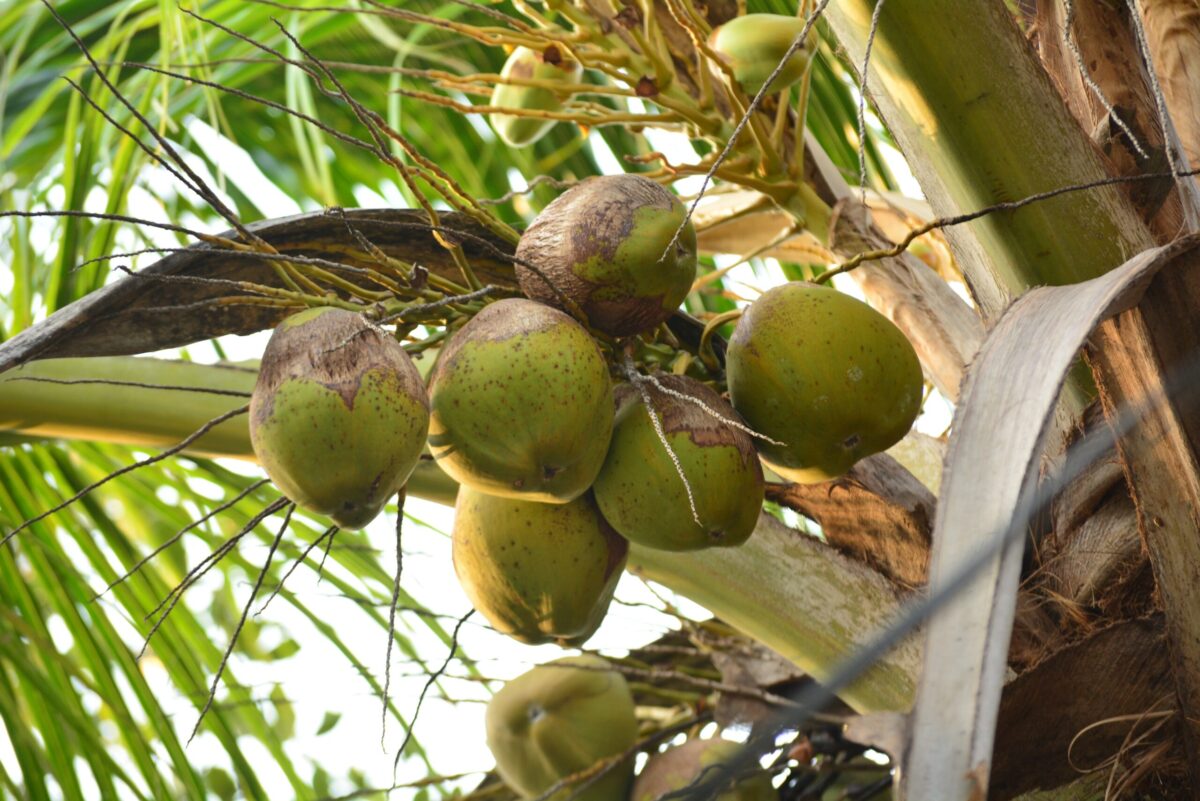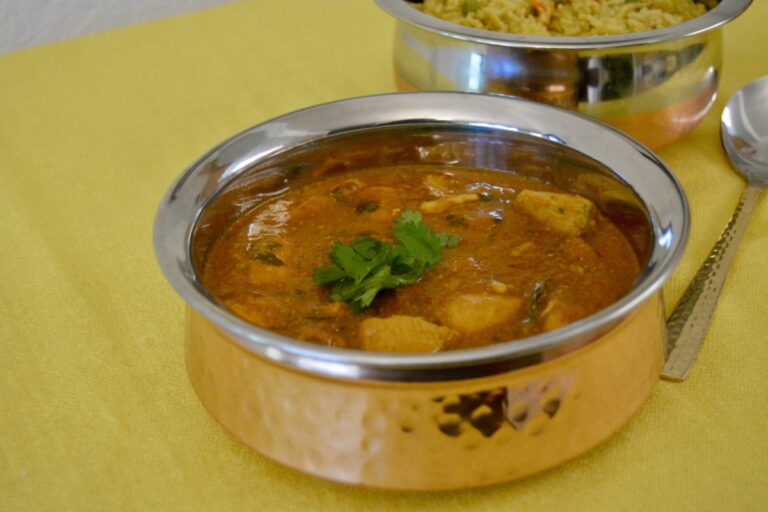I stop by to see Mama and Dad. Mama is busy in the kitchen. My youngest sister and her hubby are driving down from Carmel-by-the-Sea, California, with their two little girls for a short visit. Mama is busy in the kitchen fixing dinner. She is fixing Keema Curry as my brother-in-law, in particular, is very fond of it. She does that with all her sons-in-law and kids when we visit, so we always look forward to Mama’s “specials” and to her spoiling us!
Keema is ground/minced meat that is fixed with traditional Indian spices. It goes well with most Indian meals, rice, and pilaf. It tastes good with any flat bread or fried bread like Pooris or Baturas.
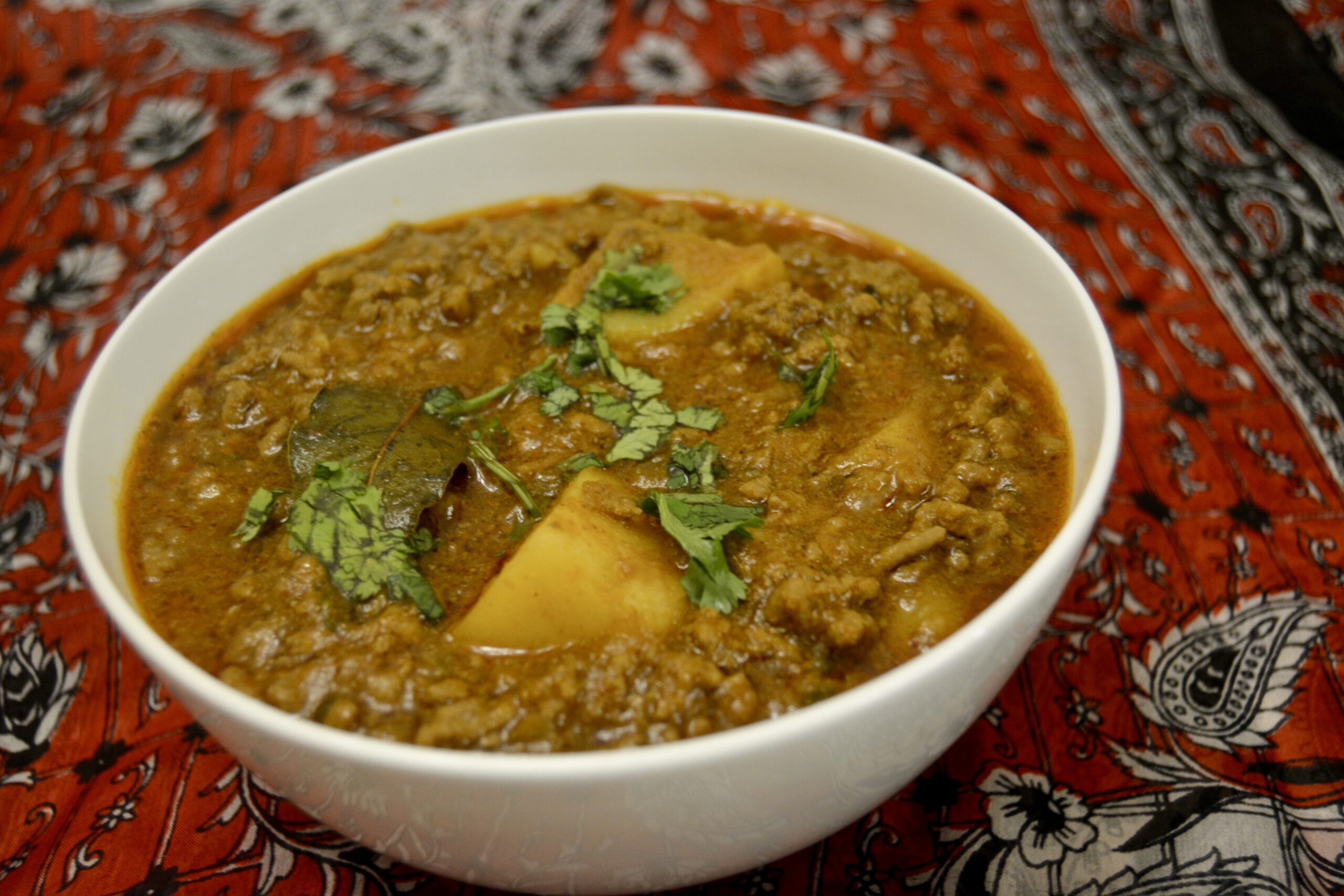
Keema Curry (Ground Beef Curry)
Ingredients
- 1 lb ground lean beef (goat, lamb—see notes if using 80% fat free beef)
- 1 medium Serrano chili (stem removed and slit in half—remove seeds for less chili heat)
- 2 tbsp cooking oil
- ¼ tsp garlic powder (or garlic salt)
- 2 green cardamoms
- 1 stick cinnamon (about an inch or ¼ tsp cinnamon powder)
- 6 whole cloves (⅛ tsp clove powder)
- 6 whole pepper corns (½ teaspoon pepper powder)
- 1 medium onion (about ¾ cup when chopped fine or partially puree in a chopper )
- 1 tbsp garlic paste
- 1 tbsp ginger paste
- 3 medium Roma tomatoes (or 2 tbsp tomato paste or 2 tomatoes and 1 tbsp tomato paste)
- 1 tsp turmeric powder
- 2 tsp coriander powder
- 1 tsp cumin powder
- ½ tsp red chili powder (more or less, to your taste)
- 2 medium potatoes (scrubbed clean, peeled, and quartered into 8 cubes )
- 1 cup fresh cilantro / coriander leaves (1 cup loosely filled cilantro/ coriander leaves, chopped fine)
- 2 tbsp chopped cilantro / coriander leaves (for garnish)
Instructions
- In a medium stew pot, skillet or wok, add about a teaspoon of oil and swirl it around.
- Turn the stove on medium heat, and when the oil is heated a bit, add the ground beef, breaking it into bits with the spatula.
- Sprinkle the ground beef with about 1/4 teaspoon of garlic powder or garlic salt.
- Braise the ground beef, occasionally stirring, until the fat separates, and the beef changes color uniformly and is no longer pink—about 15 minutes. Do not brown.
- Turn off the stovetop. Drain excess fat. See notes.
- Meanwhile, wipe the used pot of any traces of the ground beef and put it back on the stove on medium heat.
- Add 2 tablespoons of oil.
- Add the slit green chili, then the bay leaves, cardamom, cinnamon, cloves, and pepper. Let sizzle for 30 seconds. **If you are using any of them in powdered form, hold them for now.
- Add the finely chopped onion and sauté for 8 minutes until ¾ brown.
- Now add the ginger and garlic paste and sauté for a minute.
- Add the turmeric, coriander, cumin, chili, and any of the whole spice powders you have decided to use.
- Sauté for another minute until you feel the ginger sticking to the bottom of the pan and the oil starts to separate.
- Now add the tomatoes. Stir and cook for another 6 minutes until the tomatoes begin to soften.
- Add the chopped cilantro, and cook until the oil starts to surface once more. About 2-3 minutes.
- Add the ground beef and stir well. Cook uncovered for 5 minutes, stirring occasionally.
- Add 2 cups of water and the potatoes.
- Add the salt and give it a few stirs.
- Cover, reduce heat to medium-low, and cook for another 20 minutes, stirring occasionally. If the gravy has thickened too much, add a little more hot water.
- Check for salt in the last 5 minutes of cooking. At the same time, check on the potatoes to see if they are done.
- To check, pierce potatoes with a skewer. It should slide through easily. If not, give it a few more minutes. Turn off the heat and let it sit for at least 5 minutes. Remember, potatoes cook a bit after you turn off the stove.
- Transfer to a serving dish and garnish with the reserved chopped cilantro.
Notes
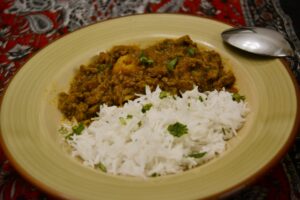 1. Serve with plain rice or pilaf, flatbreads, fried bread, or as part of a complete Indian meal.
2. If you are using 80% fat-free beef, as I do sometimes, then before starting to cook, prepare to strain the excess beef fat released when cooking. Do this by folding two paper towels together and placing them on the sieve. You will drain the ground beef and a pot underneath, of course, to catch the excess drip. This step is unnecessary if you are using lean beef or lean meats. All you need to do is sauté the ground beef for about 15 minutes and set aside until ready to add to the curry.
3. If you would like to add peas, you can microwave a cup in a bit of water and add them to the ground beef in the last 5 minutes. Mama always said peas seem to retain their bright color if you do that rather than boil them with the gravy for 15 mins. You can do that, too, if you don't like using a microwave.
1. Serve with plain rice or pilaf, flatbreads, fried bread, or as part of a complete Indian meal.
2. If you are using 80% fat-free beef, as I do sometimes, then before starting to cook, prepare to strain the excess beef fat released when cooking. Do this by folding two paper towels together and placing them on the sieve. You will drain the ground beef and a pot underneath, of course, to catch the excess drip. This step is unnecessary if you are using lean beef or lean meats. All you need to do is sauté the ground beef for about 15 minutes and set aside until ready to add to the curry.
3. If you would like to add peas, you can microwave a cup in a bit of water and add them to the ground beef in the last 5 minutes. Mama always said peas seem to retain their bright color if you do that rather than boil them with the gravy for 15 mins. You can do that, too, if you don't like using a microwave.
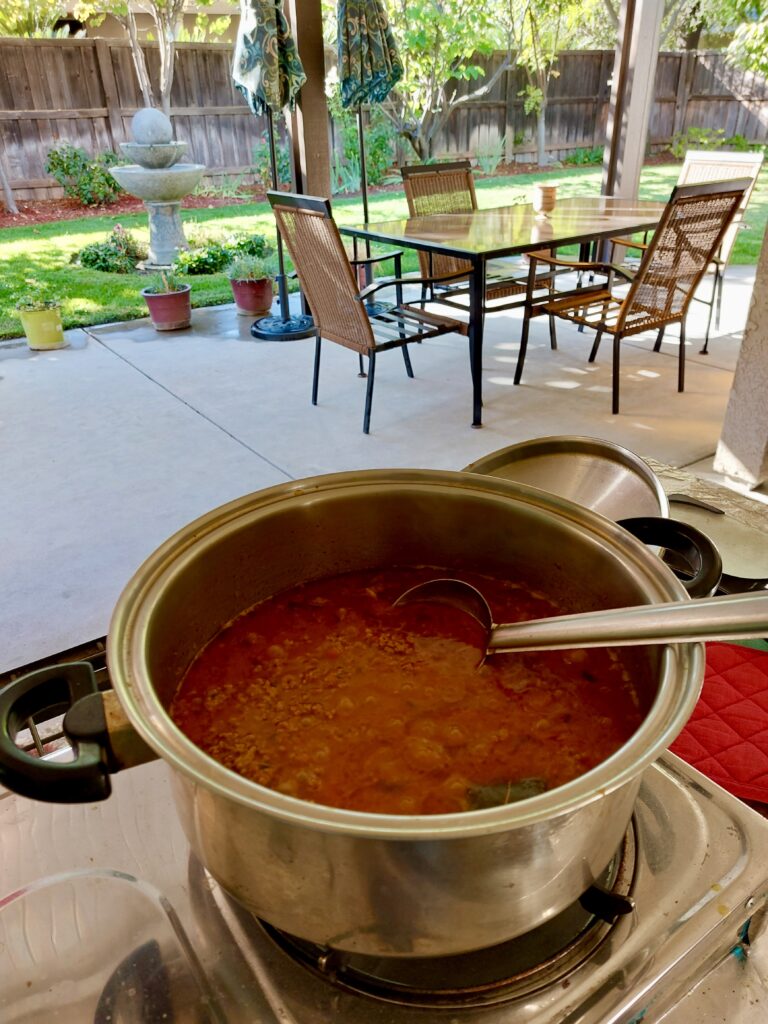
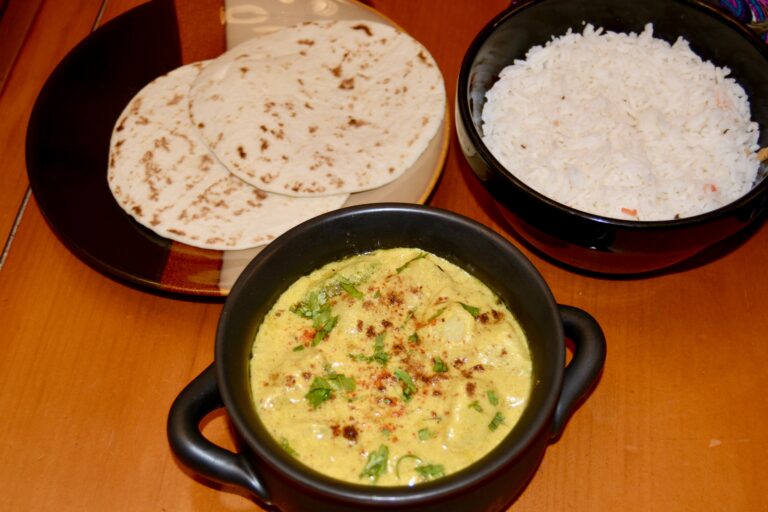
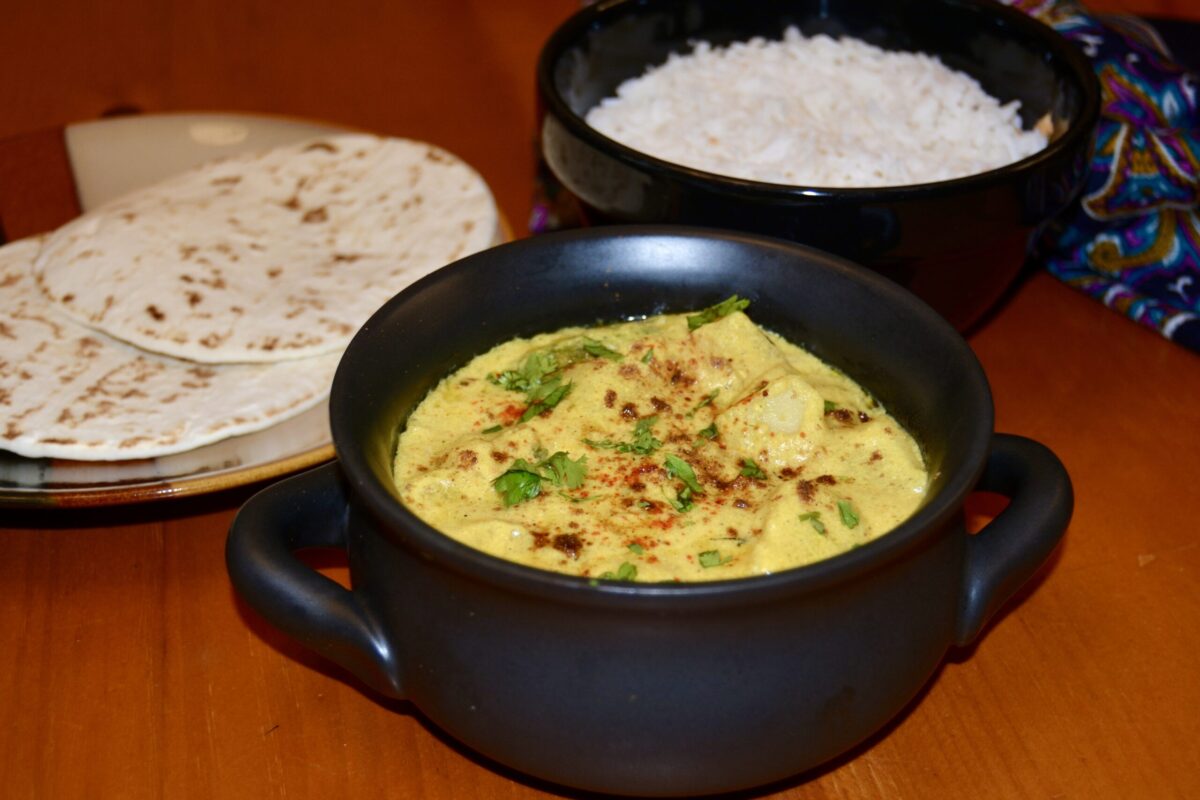
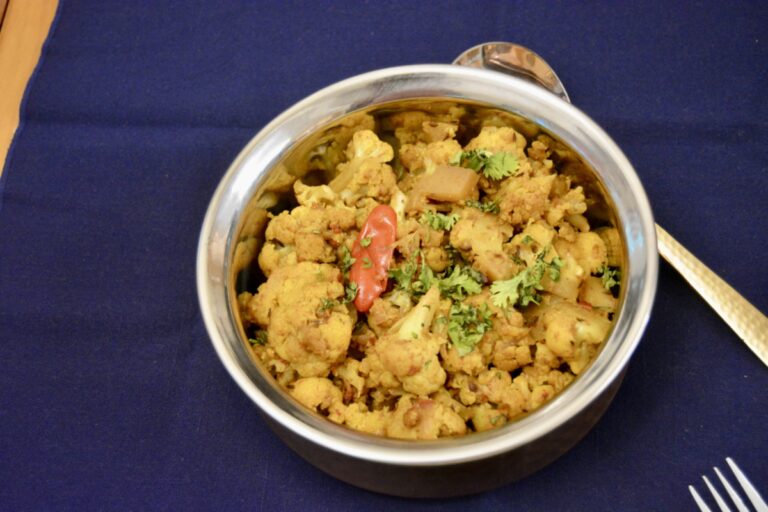
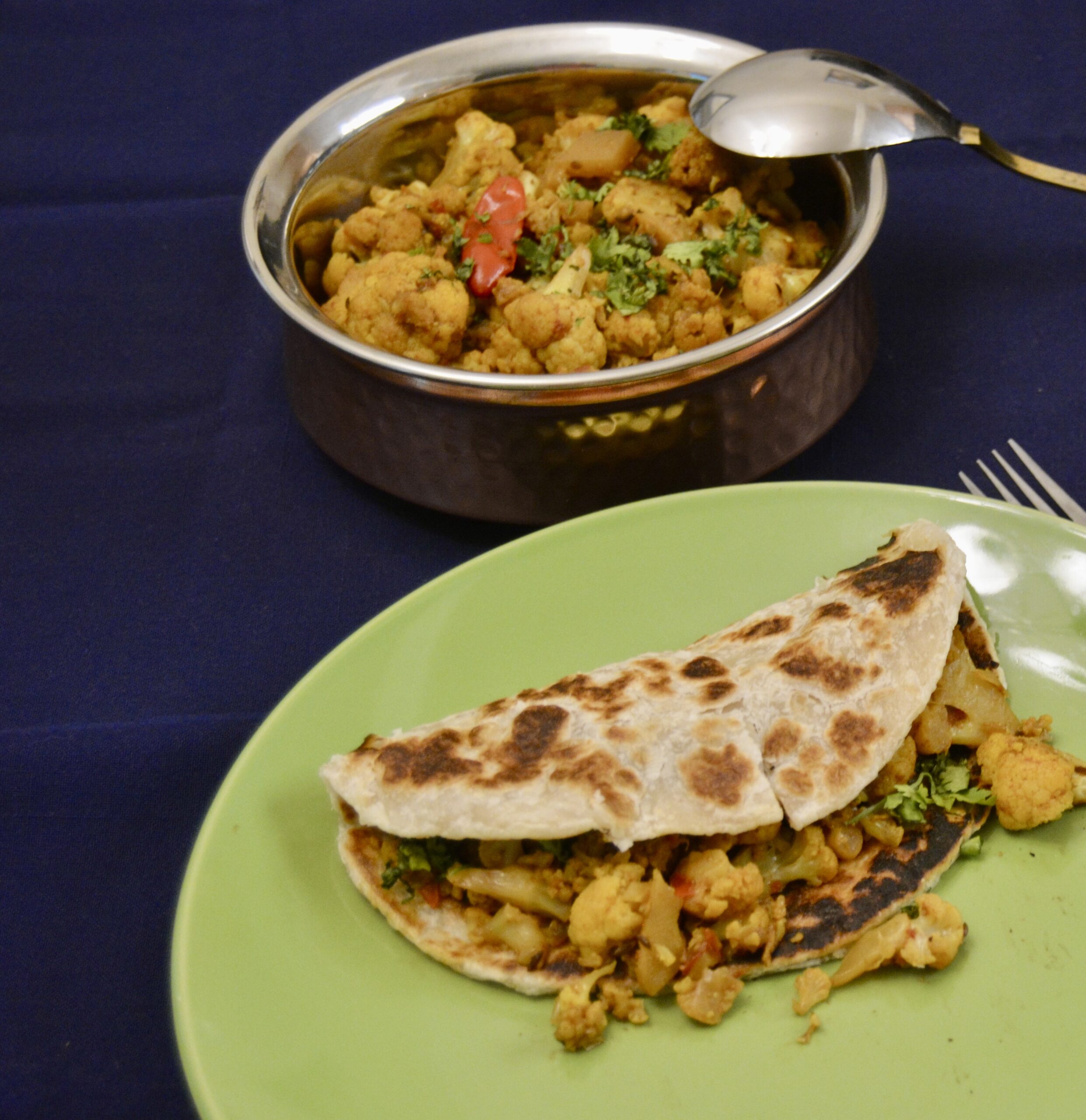
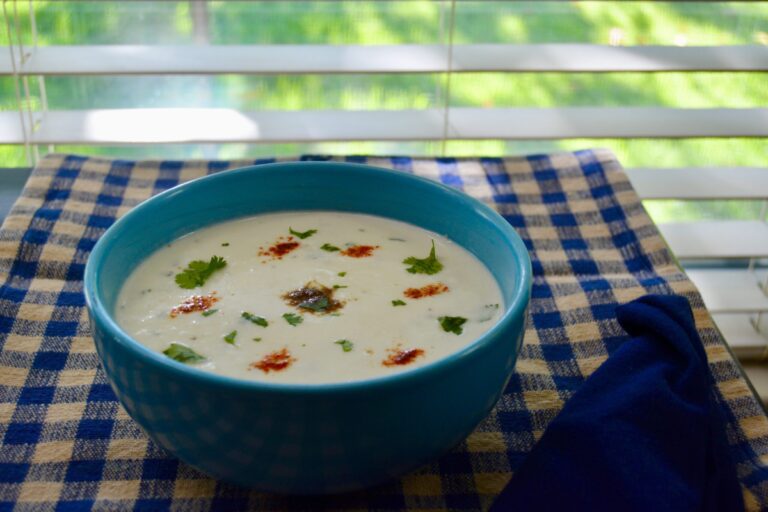
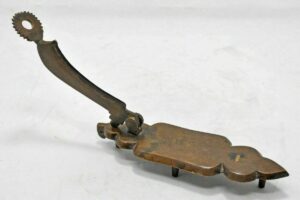 I remember the old-fashioned scraper in the kitchen used when I was a kid. It was a metal blade shaped like a scythe, at the end of which was a circular metal disk with sharp teeth. The metal blade was mounted on a square block of wood. To scrape the coconut, you had first to remove the husk, then split the brown kernel in half. Next, you set up the scraper on the floor with a bowl or tray to catch the grated coconut. You sat on your haunches on the floor and steadied the board with the weight of one foot. Holding the coconut half against the scraping metal, you would move it back and forth across the grate, and the white meat would fall into the receiving bowl or plate. The metal teeth were sharp, and you had to be careful. The best part was the sharp blade was used to cut meat and poultry. It was always fascinating to watch the cook doing it. We were not allowed near the gadget, of course!
I remember the old-fashioned scraper in the kitchen used when I was a kid. It was a metal blade shaped like a scythe, at the end of which was a circular metal disk with sharp teeth. The metal blade was mounted on a square block of wood. To scrape the coconut, you had first to remove the husk, then split the brown kernel in half. Next, you set up the scraper on the floor with a bowl or tray to catch the grated coconut. You sat on your haunches on the floor and steadied the board with the weight of one foot. Holding the coconut half against the scraping metal, you would move it back and forth across the grate, and the white meat would fall into the receiving bowl or plate. The metal teeth were sharp, and you had to be careful. The best part was the sharp blade was used to cut meat and poultry. It was always fascinating to watch the cook doing it. We were not allowed near the gadget, of course!